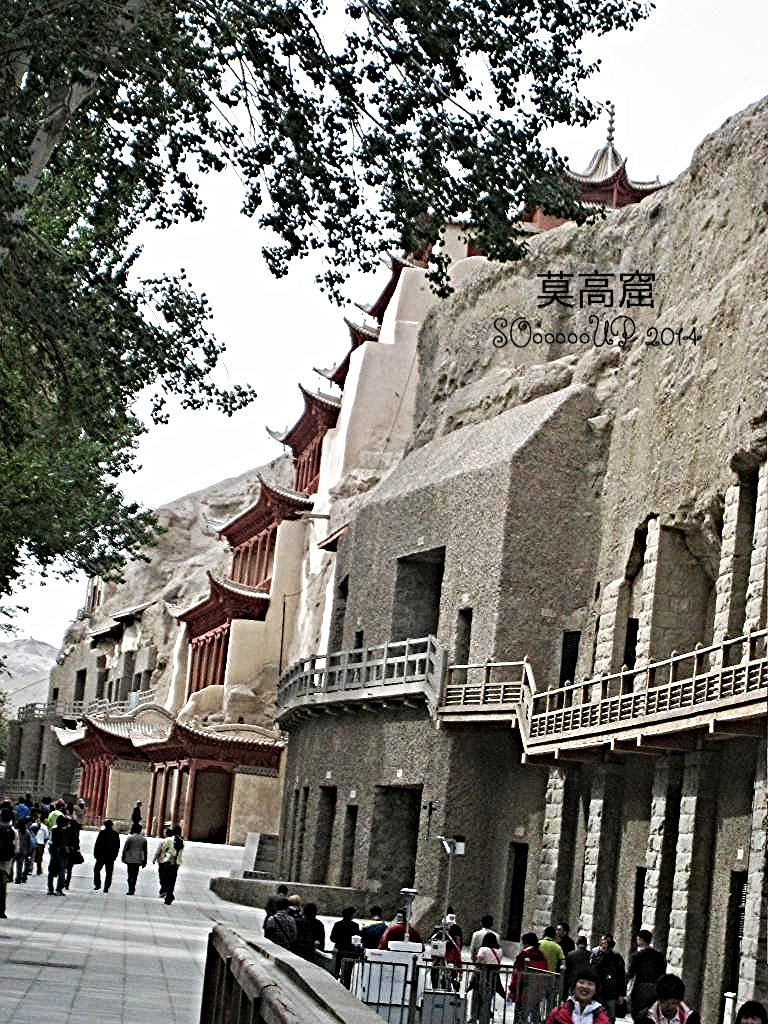The Mogao Caves or Mogao Grottoes (莫高窟), also known as the Caves of the Thousand Buddhas (千佛洞), form a system of 492 temples 25 km southeast of the center of Dunhuang, an oasis strategically located at a religious and cultural crossroads on the Silk Road, in Gansu province, China.
Just outside the entrance to the cave complex is the excellent Research and Exhibition Center (daily 9am-7pm), which includes seven replicas of caves (3, 217, 220, 249, 275, 285, 419) with English signage.
A new project, however, is bringing these murals to the public in an exciting new way. The Dunhuang Academy has taken thousands of high-definition images of the Buddhist murals from each cave and merged them into 3-D film. Visitors can then view the 3D footage and feel like they’re enjoying the caves (which are usually off limits to the public) for themselves first-hand. A new dome theater at the Mogao Caves will officially open to the public in August of this year and the film will be available there. - See more at: http://www.cnto.org/3d-film-show-mogao-caves/#sthash.irAEfqGY.dpuf
There were originally about 1,000 Buddhist cave temples here, over 600 of which survive in recognizable form. Many are off-limits. The site is made up of hundreds of man-made caves that have been carved out of the rock face. Buddhist monks originally came to worship and meditate in the caves here.
Thirty main caves are open to the public, and most visitors manage to visit no more than fifteen in a day. The caves are all clearly labeled with numbers above the doors. They are not lit inside, in order to preserve the murals, but guides carry flashlights and visitors should bring their own as well.
Thirty main caves are open to the public, and most visitors manage to visit no more than fifteen in a day. The caves are all clearly labeled with numbers above the doors. They are not lit inside, in order to preserve the murals, but guides carry flashlights and visitors should bring their own as well.
The 492 cells and cave sanctuaries in Mogao are famous for their statues and wall paintings, spanning 1,000 years of Buddhist art.
Cave 148, Reclining Buddha from the 8th century, is special for its reclining Buddha and incredible wall paintings, the colors of which have survived for over 1,200 years. The Buddha is over 15 meters long and was repainted in the Qing Dynasty. The walls are decorated with beautiful paintings telling the story of the Buddha's life.
During the cultural revolution the Buddha and some painting was destroyed. Main painting of the cave was restored around 1995.
This Nine Storey Building cave is Mogaoku's landmark. It was built for the protection of the colossal Buddha inside the cave. It had four storeys when it was first build in the late 17th century; then increased to five the in the 9th century; restored in 966 and rebuilt to seven in 1898 and finally extended to nine storeys in 1935. The ninth storey is octagonal in shape and has a three metre vase at the top.
Inside the cave is a colossal Buddha (35.5m high), made of clay stucco over a sandstone frame. This statue was actually the fourth largest stone Buddha in the world.































No comments:
Post a Comment